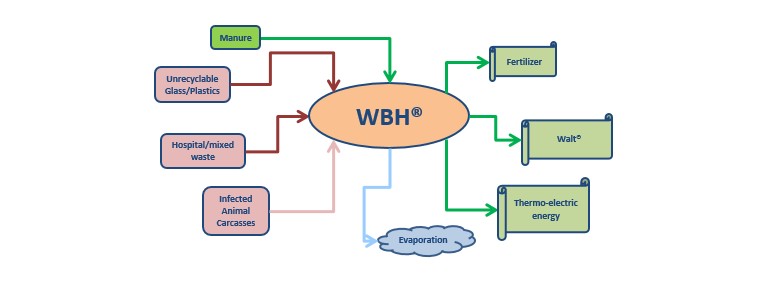×
WBH® (Waste Black Hole) is an integrated macro process powered by biomass for the definitive inert confinement of special and hazardous waste. The process, which uses animal organic residues as its primary energy source, makes use of appropriate technological solutions made particularly effective thanks to the use of some special components. All residues resulting from waste treatment are incorporated within glass discs formed using the energy produced by the same process, without any further contribution. The size of the discs and their colors may vary according to the waste incorporated. Therefore, in addition to the possible production of thermoelectric energy (convenient only with larger plant sizes), a product called WALT® is obtained, a tree of light ("shining tower of inert waste") formed by concentric glass discs, completely inert and useful for urban furnishings, even in the suburbs, because it is illuminated from the inside with light effects that create a pleasant visual result. WBH® and WALT® prevent special and hazardous waste from coming into direct contact with the environment in concentrated form because they ensure that non-recyclable harmful substances are confined and gradually disposed of over a very long time, allowing their dispersion without risk and eco-destructive alterations. The process and the product can help reduce deposits in landfills and become a symbol of the concrete commitment of institutions and individual citizens for environmental protection.

